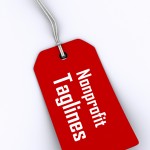 The popular TV show House features a genius doctor whose abrasive manner clashes with patients. It’s great entertainment although it’s amazing House doesn’t get sued every week! In Blink, Malcolm Gladwell showed how doctors with poorer interpersonal skills got sued more than doctors who were liked by their patients. Spending an average of three minutes more with patients and engaging them with active listening was key to not being sued. Listening is a key skill that all executives can improve. It may be the difference between the next promotion and a frustrating performance review.
The popular TV show House features a genius doctor whose abrasive manner clashes with patients. It’s great entertainment although it’s amazing House doesn’t get sued every week! In Blink, Malcolm Gladwell showed how doctors with poorer interpersonal skills got sued more than doctors who were liked by their patients. Spending an average of three minutes more with patients and engaging them with active listening was key to not being sued. Listening is a key skill that all executives can improve. It may be the difference between the next promotion and a frustrating performance review.
Poor listening is costing business
Every executive position needs “good communication skills”, but very few stipulate that “good listening skills” are essential to the position. The high cost of not listening in business is not easily measured. But ask any executive about the management issues they face on a daily basis and poor listening skills are often at the root: A key client is upset when their feedback is not acted upon by your service team and now they are re-evaluating your account. Despite a long executive meeting, the CEO’s key messages are not implemented. A high potential executive hands in her notice unexpectedly hinting at the poor communication skills of her manager. The list and cost to business goes on.
Active listening is the key
As Ernest Hemingway said, “When people talk, listen completely. Most people never listen.” The reason why listening is a weaker skill is clear. At school, we are taught to speak, read, and write but never to listen. Good listening is not passive, it requires a leader to concentrate on listening intently and not drift away with thoughts of their own, especially if they don’t agree with the speaker.
The purpose of active listening is to show respect to the speaker, understand how the speaker is feeling and finally what are the facts that they are conveying. Speaker, feelings and content in that order. Nothing is more flattering than listening with 100% of your attention. In a short attention span world, how many times have you been speaking to someone who is glancing at their computer screen, mobile device or watch? Your opinion of them goes down and your productivity often follows. Let’s see an easy three-step process you can follow.
The three-step listening process
Executives who rise to the very top are those who realize communication is their job, not only a skill needed as part of their job description. Successful leaders depend on strong relationships and relationships are built on clear communications. Active listening is an essential part of the puzzle.
Step 1 : Listen with all your attention
Active listening requires both non-verbal and verbal skills. Make eye-contact with the speaker, adjust your body position so that you are facing the speaker. This shows your attention is directed to the speaker. While listening, you can nod your head from time to time. These all show respect to the speaker.
Listening is not a one way street. After listening for a while, demonstrate your understanding by using phrases like:
“You feel that your contribution to the project has not been recognised…”
“It seems like you need a fresh challenge…”
“As I understand it, you sound frustrated with our current renummeration plan…”
“It appears as if you have a point. Let’s explore this further by…”
“If I hear you correctly, you’d like to attend an executive training workshop…”
Step 2: Pause before you speak
While you are listening, avoid the urge to interrupt or finish the speaker’s sentences.
Before you respond apply the motto, “Put your brain into gear before you put your mouth into motion”. Pause before you speak. Take a breathe. Count to three. Ensure that you are not talking over the speaker.
Step 3: Craft your reply
Before responding, ask yourself, “Is it worth it?” A question suggested by executive coach Marshall Goldsmith to help you think how the speaker will feel about your reply. A listener should not outshine the speaker. Don’t alienate the speaker with phrases like:
“I knew that already.”
“I never experienced that when I was in the sales division.”
“Sure I agree, but have you considered the other side.”
“I don’t agree. That’s just your opinion.”
Remember that a good listener’s concern is to understand the speaker’s feeling and point of view on a topic. Good listener’s will take these feeling on board, acknowledge them and before giving a reply, think about how the speaker will feel. Sometimes a good listener will only seek to understand, and not respond in the heat of the moment.
While listening is an under-rated skill, the ambitious executive uses it everyday. Polish your listening skills by acknowledging the speaker and their feelings while understanding the content. Good listener’s don’t interrupt and they carefully craft their response. Top executives realize that their listening skills are the hidden key to their success and further career progression.
RESOURCE BOX
Warwick John Fahy is the international executive speech coach for senior executives, business leaders and entrepreneurs who need to influence clients, investors, shareholders and team members. His highly practical approach and deep cross cultural intelligence have made him a sought-after business presentation coach throughout the world.
Warwick is the author of the acclaimed book, The One Minute Presenter – 8 steps to successful business presentations in a short attention span world. For free executive speaking tips visit http://www.oneminutepresenter.com/blog
To arrange presentation skills training or coaching to build your executive presence visit this web site.
For a media interview call +86 1391 786 7502.
Copyright 2010 Warwick John Fahy All rights reserved.
 In part two of this three part look at product launches, we will build on “Less is More” as featured in Part 1 here.
In part two of this three part look at product launches, we will build on “Less is More” as featured in Part 1 here.





